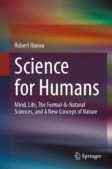Search
Search Results
-
Introduction
We summarize the topics presented in this book, and when appropriate we enlighten cross–references among the different topics: high precision and...
-
Cosmological Applications of Loop Quantum Gravity
After a brief introduction to classical and quantum gravity we discuss applications of loop quantum gravity in the cosmological realm. This includes...
-
Quantum Corrections to Scalar Quintessence Potentials
We give a brief introduction into the formalism of the effective action. We use the effective action to investigate the stability of scalar...
-
The Accelerating Universe and Dark Energy: Evidence from Type Ia Supernovae
I discuss the use of Type Ia supernovae (SNe Ia) for cosmological distance determinations. Low-redshift SNe Ia (...
-
Infering Annihilation Channels of Neutralinos in Galactic Halos
Applying the microcanonical definition of entropy to a weakly interacting and self–gravitating neutralino gas, we evaluate the change in the local...
-
Electroweak Baryogenesis and Primordial Hypermagnetic Fields
The origin of the matter-antimatter asymmetry of the universe remains one of the outstanding questions yet to be answered by modern cosmology, and...
-
Quintessential Inflation at the Maxima of the Potential
There is great interest in understanding a possible late accelerated expansion of the universe. Data suggest that the universe was still decelerating...
-
The Scalar Field Dark Matter Model: A Braneworld Connection
This work is a review for the progress of the scalar field dark matter (SFDM) hypothesis. Here we outline a possible brane world model justifying the...
-
Lectures on the Theory of Cosmological Perturbations
The theory of cosmological perturbations has become a cornerstone of modern quantitative cosmology since it is the framework which provides the link...
-
Inflation and Braneworlds
An introductory review of the Randall-Sundrum type II braneworld scenario is presented, with emphasis on the relationship between the density and...
-
Measuring Spacetime: From Big Bang to Black Holes
Space is not a boring static stage on which events unfold over time, but a dynamic entity with curvature, fluctuations and a rich life of its own...
-
Creation of Brane Universes
The presence of a 4-form field in a fixed background spacetime can give rise to the creation of brane universes, that mimic the Swinger pair...
-
Brane World Cosmology
We first give an overview of several brane models, and show how to deal with a higher-dimensional brane world scenario. We then discuss one formalism...
-
Quintessence and Dark Energy
Dark energy accounts for about 70% of the content of our Universe. Perhaps the best candidate to parametrize the dark energy is a scalar field with...
-
An Introduction to Standard Cosmology
A short introduction to the Standard Big Bang model is provided, presenting its physical model, and emphasizing its long–standing problems such as...
-
Cosmic Acceleration, Scalar Fields, and Observations
Conditions for accelerated expansion of Friedmann–Robertson–Walker space–time are analyzed. Connection of this scenario with present–day observations...
-
Inflation – In the Early Universe and Today
In these lectures we will be giving a basic introduction to modern ideas in cosmology. Beginning with a review of the Standard Big Bang (SBB)...
-
A Neo-Organicist Approach to Formal Science: The Case of Mathematical Logic
What I’ve been calling the explanatory inversion thesis says that all mechanical systems whatsoever, whether formal or natural, are explanatorily and...
-
Sensible Set Theory
In this chapter, I argue that we not only can but also should accept only a version of set theory that’s essentially restricted in a broadly Kantian...
-
Neo-Organicism and the Rubber-Sheet Cosmos
In this chapter, I argue that the affirmation and recognition that complementarity, entanglement, and nonlocality pervade manifest natural reality at...
